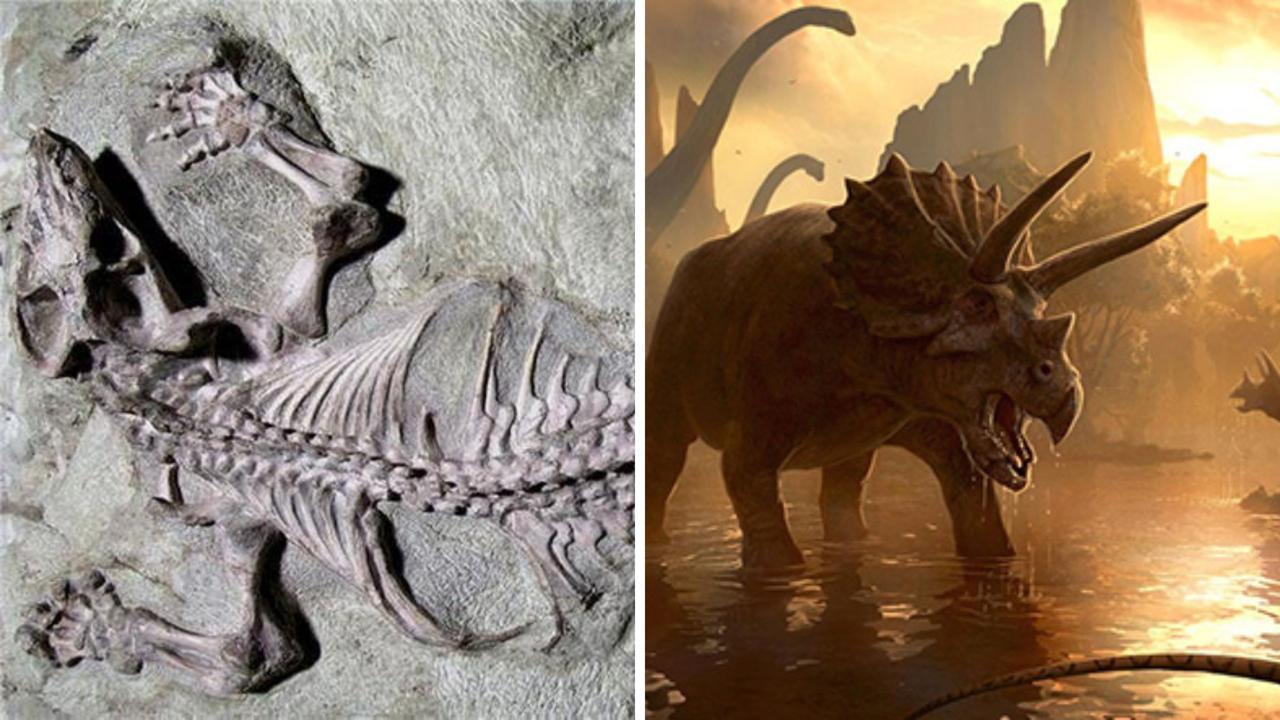
Marine mass extinctions have fascinated and puzzled scientists for decades. Millions of years ago, our oceans were teeming with diverse life forms, from small microorganisms to giant marine reptiles. But suddenly, vast numbers of these species vanished. So, what triggered marine mass extinctions millions of years ago? Recently, a groundbreaking study has offered new clues to this age-old mystery, revealing factors that contributed to the sudden and devastating loss of marine life. The findings provide crucial insights into not only Earth’s past but also its present and future.
Marine life millions of years ago was extraordinarily diverse. From the early Cambrian period to the more recent Cretaceous era, the oceans were home to an astonishing range of species. However, throughout Earth’s history, there have been five major mass extinctions, with marine life being severely affected. These events wiped out a significant portion of ocean species, forever altering the ecosystems and leaving behind gaps that took millions of years to refill.
The most well-known mass extinction event occurred about 66 million years ago, famously wiping out the dinosaurs. But the marine world also suffered heavily during this time. Entire species of marine reptiles, fish, and invertebrates disappeared in a geological blink of an eye. What triggered marine mass extinctions millions of years ago has always been debated, with theories ranging from asteroid impacts to volcanic eruptions and dramatic climate shifts.
Recently, a team of scientists conducted an extensive study that sheds new light on the mystery of ancient ocean life disappearance. This study, published in a renowned scientific journal, explored geological evidence and chemical signatures trapped in ancient rocks to understand the environmental factors that led to these catastrophic events.
The researchers found that one of the primary triggers behind several marine mass extinctions was a phenomenon known as "anoxia." Anoxia refers to a complete depletion of oxygen in the oceans, creating conditions where marine life simply could not survive. As oxygen levels dropped, marine ecosystems became inhospitable for many species, leading to widespread extinction.

One of the most significant revelations of this study is the connection between marine mass extinctions and ancient climate change. Millions of years ago, Earth’s climate was far more volatile than it is today. Sudden increases in global temperatures, often linked to massive volcanic eruptions or shifts in atmospheric gases, led to disruptions in ocean chemistry. These changes, coupled with a rise in greenhouse gases, caused the oceans to lose their oxygen, creating anoxic conditions.
In fact, the study highlights that some of the worst marine mass extinctions were triggered by rapid global warming events. As temperatures soared, it led to ocean stratification, where warmer, oxygen-poor water stayed near the surface, while cooler, oxygen-rich water remained at deeper levels. This stratification prevented the mixing of water layers, cutting off oxygen supply to marine organisms living in mid and deep-water zones.
Another key factor identified in what triggered marine mass extinctions millions of years ago is volcanic activity. The Earth’s geological history is marked by periods of intense volcanic activity, such as during the Permian-Triassic extinction event, often referred to as "The Great Dying." Massive volcanic eruptions released enormous amounts of carbon dioxide and sulfur into the atmosphere, triggering severe climate changes and acidifying the oceans.
Acidification, in turn, disrupted marine ecosystems by affecting organisms that relied on calcium carbonate to build their shells and skeletons, such as corals and shellfish. Without a stable environment, these species, along with many others, faced extinction.
The research also highlights the release of methane from undersea deposits during these volcanic events. Methane is a potent greenhouse gas, and its release likely exacerbated the warming of the planet, pushing the oceans further into anoxic conditions.

While the study sheds light on what triggered marine mass extinctions millions of years ago, it also emphasizes how some species managed to survive while others perished. The ability of marine organisms to adapt to changing conditions played a crucial role in determining their fate. Species that could tolerate low oxygen levels or had the ability to move to less affected areas were more likely to survive. However, many species, especially those highly specialized for certain habitats, were unable to adapt quickly enough and were lost forever.
For example, deep-sea organisms living in highly stable environments were particularly vulnerable to sudden changes. In contrast, species inhabiting coastal and shallow waters, which were more accustomed to fluctuating conditions, fared better in surviving these extinction events.
Understanding what triggered marine mass extinctions millions of years ago is not just about unraveling the past—it’s also about protecting the future. Today, the planet is once again facing significant challenges due to climate change, ocean acidification, and oxygen depletion. The factors that led to the mass extinctions millions of years ago, such as global warming and ocean anoxia, are increasingly becoming concerns in the modern world.
The study serves as a stark reminder that Earth's ecosystems are deeply interconnected and sensitive to environmental changes. If history is any indication, rapid shifts in climate and ocean conditions could have catastrophic consequences for marine life once again.
What triggered marine mass extinctions millions of years ago is a big mystery that scientists have been trying to solve. A new study has helped us understand what triggered marine mass extinctions millions of years ago, and it turns out that changes in the ocean's oxygen levels and climate were to blame. The research shows that what triggered marine mass extinctions millions of years ago includes things like volcanic eruptions and global warming, which made the oceans lose oxygen. What triggered marine mass extinctions millions of years ago also involved ocean anoxia, where the water didn’t have enough oxygen for marine animals to live. Understanding what triggered marine mass extinctions millions of years ago helps us see how climate change today could harm ocean life.
This article provides information on what triggered marine mass extinctions millions of years ago based on current scientific studies. DXB News Network is committed to sharing knowledge about what triggered marine mass extinctions millions of years ago to help people understand our planet’s history. Please note that what triggered marine mass extinctions millions of years ago is a complex topic, and ongoing research may continue to uncover more details about what triggered marine mass extinctions millions of years ago. Always refer to trusted sources for updates.
Marine mass extinctions, Ancient ocean life, Mass extinctions millions of years ago, Marine life disappearance, Ocean anoxia, Ancient climate change, Volcanic activity and marine extinctions, Oxygen depletion in oceans, Global warming and ocean life, Ancient ocean ecosystems, Permian-Triassic extinction, Ocean acidification, Marine species extinction, Climate shifts and marine life, Earth’s geological history and extinctions
#trending #latest #MarineMassExtinctions, #AncientOceanLife, #MassExtinctions, #MarineLifeDisappearance, #OceanAnoxia, #ClimateChange, #VolcanicActivity, #OxygenDepletion, #GlobalWarming, #OceanEcosystems, #PermianTriassic, #OceanAcidification, #SpeciesExtinction, #ClimateShifts, #GeologicalHistory #breakingnews #worldnews #headlines #topstories #globalUpdate #dxbnewsnetwork #dxbnews #dxbdnn #dxbnewsnetworkdnn #bestnewschanneldubai #bestnewschannelUAE #bestnewschannelabudhabi #bestnewschannelajman #bestnewschannelofdubai #popularnewschanneldubai

Sheikh Dr. Sultan bin Mohammed Al Qasimi, Ruler of Sharjah, has issued an Emiri Decree to establish and organize the Sharjah Creative Quarter (SCQ)...Read More.

Ruling BJP and allies proposed 23 changes to the Waqf Amendment Bill, while the opposition suggested 44, but none were accepted...Read More.
 Taylor Swift Stuns in ₹4.5 Lakh Louis Vuitton Jacket at Travis Kelce's Match
Taylor Swift Stuns in ₹4.5 Lakh Louis Vuitton Jacket at Travis Kelce's Match
Taylor Swift's Louis Vuitton jacket stole the spotlight as she cheered for boyfriend Travis Kelce du
 Gulf Giants Secure Six-Wicket Victory Over Sharjah Warriorz
Gulf Giants Secure Six-Wicket Victory Over Sharjah Warriorz
Tom Alsop played a brilliant knock, scoring an unbeaten 85 to lead Gulf Giants to a stunning six-wic
 Dubai's Real Estate Market Stays Among the World’s Best: Hamdan bin Mohammed
Dubai's Real Estate Market Stays Among the World’s Best: Hamdan bin Mohammed
Dubai’s real estate sector sees AED761B in transactions and 2.78M procedures in 2024
 Tamer Ashour & Adam to Perform at Al Majaz Amphitheatre on February 15
Tamer Ashour & Adam to Perform at Al Majaz Amphitheatre on February 15
Tamer Ashour & Adam to perform at Al Majaz Amphitheatre on Feb 15, promising a captivating night
 Keys Stuns Sabalenka to Win First Grand Slam Title
Keys Stuns Sabalenka to Win First Grand Slam Title
Madison Keys defeated top seed Aryna Sabalenka 6-3, 2-6, 7-5 to win her first Grand Slam title at th
Sharjah Ruler Approves Creation of Sharjah Creative Quarter

Sheikh Dr. Sultan bin Mohammed Al Qasimi, Ruler of Sharjah, has issued an Emiri Decree to establish and organize the Sharjah Creative Quarter (SCQ)
2 Non-Muslim Members Among 14 Changes in Waqf Amendment Bill

Ruling BJP and allies proposed 23 changes to the Waqf Amendment Bill, while the opposition suggested 44, but none were accepted
Exploring Dubai's Art and Culture Beyond the Skyscrapers

Discover Dubai's vibrant art and culture beyond its famous skyline.
Drug Kingpin Arrested After Wife's Social Media Reveals Location

Rodriguez shared photos at landmarks like the Eiffel Tower and Trevi Fountain, attracting DEA agents monitoring the couple's online movements
Thousands Return to North Gaza for 1st Time Since War as Israel Opens Crossings

After news of open crossings, tens of thousands of Gazans started walking north on Monday morning, carrying their belongings
Taylor Swift Stuns in ₹4.5 Lakh Louis Vuitton Jacket at Travis Kelce's Match

Taylor Swift's Louis Vuitton jacket stole the spotlight as she cheered for boyfriend Travis Kelce during the AFC Championship game
Anushka Sharma Stuns in Yellow Lehenga Worth ₹1.6 Lakh

Anushka Sharma is radiating elegance in her yellow lehenga designed by Mahima Mahajan. The stunning outfit exudes royal charm and costs ₹1.6 lakh, leaving every
Palestinian Voices Shine at Sundance Film Festival 2025

Palestinian-American director Cherien Dabis, set to shoot her personal drama *All That’s Left Of You* in the West Bank, was forced to reconsider her plans after
Colombia Reverses Deportation Decision After Trump’s Threats

Colombia agrees to accept deported citizens after Trump's tariff threat on Sunday, reversing defiance to US plans
From Underdogs to Winners: Amazing Comebacks in Sports

Discover inspiring sports comebacks where underdogs triumphed
3001E, 30 Floor, Aspin Commercial Tower, Sheikh Zayed Road, Dubai, UAE
+971 52 602 2429
info@dxbnewsnetwork.com
© DNN. All Rights Reserved.